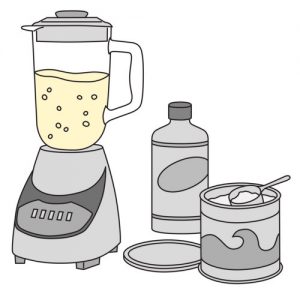Nutrition and hydration
- Your healthcare team is responsible for identifying the specific type of nutritional formula for your child. Follow their instructions for preparation, if applicable, and for the amount to give according to the feeding schedule agreed upon with you.
- Always check the expiry date on the original container or package before preparing or using the product; do not use products that are past their expiry date.
For ease of reading the rest of the text, the word (nutritional) “formula” also includes “breast milk”, “fortified breast milk” or “infant formula”.
- Preparation of the nutritional formula:
- Follow the manufacturer’s or your healthcare team’s instructions carefully.
- Confirm with your healthcare team the type of water, if any, to be used for preparation: tap water, sterile water or cooled boiled water. The type of water varies according to the age and condition of your child.
- Conservation of the nutritional formula:
- Follow the manufacturer’s or your healthcare team’s instructions carefully.
- The conservation time of the formula depends on how it is prepared (ready-to-use or reconstituted from liquid concentrate or powder).
- Unopened original containers or packaging may be stored until their expiry date.
- Remaining portions should be stored in a clean, airtight container.
- Administer the formula at the temperature your child can tolerate, as recommended by your healthcare team.
- Do not reheat the container in the microwave.
- The length of time the formula is kept in the feeding bag varies according to several factors (eg, the form of the product used, whether or not supplements have been added, etc.). Follow the instructions of the manufacturer or your healthcare team. Pour only the amount needed for the feeding session and discard the formula that remains in the bag afterwards.
The following are general recommendations for the preparation and storage of the nutritional formula:
Preparation and conservation of the nutritional formula
| Formats | Preparation | Conservation: Remaining portion of the prepared formula | Conservation: Remaining portion of the original container |
| Ready to serve |
|
X |
|
| Liquid concentrate |
|
|
|
| Powder |
|
|
|

- Precautions for the content of the feeding bag:
- Check that the feeding bag and tubing have been rinsed thoroughly before use.
- Do not add new formula to the bag if there is any left over from the previous feeding session.
- Check with your healthcare team as to how much formula to put in the feeding bag to ensure that it will keep for the correct conservation time.
- Always check that the formula is at the temperature your child can tolerate, as recommended by your healthcare team, before transferring it to the feeding bag.
- Never place the filled feeding bag near a source of heat (eg, a furnace) or in a sunny place.
- Follow the recommended conservation time for the formula in the feeding bag to avoid contamination and the development of an infection in your child.
- Your healthcare team may recommend pureed (blenderized) tube or button feeding for your child. If this is the case, they will give you the appropriate details.
- Discuss with your healthcare team whether your child’s condition also allows for drinking and/or eating by mouth.
- Even if your child is receiving enteral feeding, you can encourage your child to sit at the table while other family members eat their meal. It is important that your child participates in the meals at the table. Mealtime is a social activity for the whole family. If your child can eat by mouth, take advantage of these opportunities to encourage your child to touch and taste the food.
- You can hold your baby in your arms during feeding sessions as if you were feeding by breast or bottle.
- Discuss with your healthcare team the best position for your child during feeding to help ease digestion, avoid discomfort (eg, nausea, vomiting, reflux) and the risk of aspiration (accidental entry of formula into the lungs).
- You can burp your baby after feeding.
- If your child has a stoma, you can also decompress (or vent) the stomach prior to feeds, as taught by your healthcare team; this will help release gas and relieve bloating.